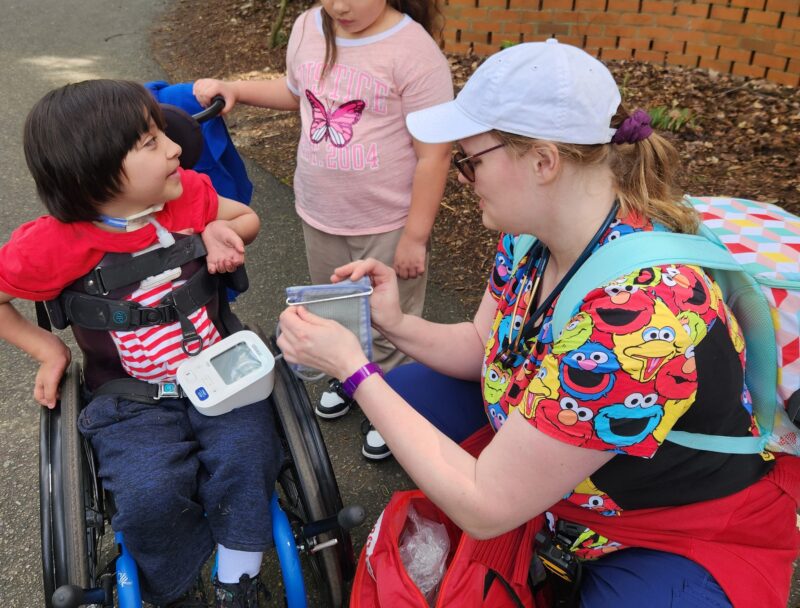
Certified nursing assistant (CNA) jobs are in high demand due to the critical need for round-the-clock pediatric care. Through their experience and knowledge, professionals in this field ensure the best comfort and safety of young to infant patients. They also ensure they leave a positive impact on both patients’ and parents’ lives. Keep exploring to discover how these positions cater to the growing demand.
Current State Of Modern Pediatric Critical Care
The demand for pediatric critical care is on the rise thanks to multiple factors, including the best treatment for infants. According to Grand View Research, the Pediatric Critical Care Market was estimated at $27.13 billion back in 2023. The same study also stated that the number will increase by 5.87%.
Other factors contributing to the current state are the growing need for specialized care among infants and young children. This applies not only to families but also to hospitals and medical facilities.
Job Growth and Opportunities for CNAs
CNA job opportunities have grown in recent years and will continue expanding soon. Employers highly seek CNAs for their advanced, high-quality care.
The increasing need for intensive care for pediatric patients is also contributing to job availability in this field. Additionally, more families continue to seek tailored healthcare solutions for their children.
With ample opportunities for career advancement, CNAs are well-equipped to shape the future landscape of pediatric nursing. For example, CNAs help minimize the nurses’ workload, such as monitoring vital signs or tending to the patient’s basic care needs.
Additionally, nursing assistants serve as the first point of contact for inquiries if other nurses are unavailable. However, this still depends on the responsibilities their supervisor delegates to them. Their roles make them both caregivers and essential links between healthcare providers and families.
Expectations Within The CNA Position
In addressing the growing needs, medical companies aim to build RN careers and provide opportunities for both parties. Families and medical professionals will have a reliable contact, while eager individuals will gain experience and skills.
Additionally, CNA jobs revolve around an array of tasks, each aiming to ensure the well-being of young patients. Whether they are working with parents directly or collaborating with healthcare professionals, their presence ensures positive outcomes.
Pediatric nurses and assistants are both mentally and physically fit to deliver round-the-clock pediatric care. Some common roles include:
- Monitoring Vital Signs: They regularly monitor the patient’s vital signs, such as their temperature, blood pressure, and respiration rate. This helps them assess the patient’s overall health and take necessary actions if abnormal readings are discovered.
- Medical Applications: If approved by supervisors, CNAs are also responsible for medical applications. Since managing medications is a shared responsibility in pediatric nursing, nurses must be knowledgeable about dosages and potential side effects.
- Cardiac Management: According to the Mayo Clinic, around 40,000 infants are born with heart defects every year. Pediatric nurses, including CNAs, must be particularly attentive to patients with cardiac-related needs. Furthermore, they will collaborate with healthcare providers to manage and adjust patient care.
- Diabetes Management: CNAs also keep an eye on regularly monitoring and treating infants’ blood sugar levels. Part of their role includes checking glucose levels and helping parents understand how to manage their condition effectively.
- Injury Recovery: In specific situations, CNAs also help support infant injury recovery. They assist young patients with rehabilitation exercises and mobility training. By providing encouragement and physical support, these nursing assistants contribute significantly to the healing process.
- Neonatal Feeding and Growth: Some nursing assistants also help with feeding and monitoring newborn growth. Contributing to neonatal care is critical to ensure that infant patients thrive during their early stages of life.
- Transitioning Patients from Hospitals to Homes: Nursing assistants also facilitate the transition of pediatric patients from hospital settings back to their homes. Depending on staff availability and supervisor approval, the CNAs educate families about ongoing care needs and regular attention. They will also share pediatric home care tips for improved living.
Long-term Impact on the Healthcare Workforce
The future of certified nursing assistants in pediatric healthcare is both prosperous and promising. In meeting the demand, these individuals will have opportunities to advance their careers to new heights.
By continuously building their existing skills and knowledge, they can deliver long-lasting impacts in different ways. Additionally, catering to those looking for these positions also showcases a positive message regarding quality of life and pediatric healing.
As healthcare systems increasingly recognize the need for pediatric expertise, their demand for skilled nurses will continue to rise. Accessing available pediatric nurses alleviates staffing shortages and makes these services more accessible. Moreover, by meeting the growing demands, families won’t feel limited in their options to access pediatric care and assistance.
This offers valuable experience that can lead to advanced positions in nursing or other medical specialties.
Rely on Nursing Evolutions For Elevated Infant Care
Available CNA jobs cater to various needs in pediatric care. Whether it is for monitoring vital signs to applying medical treatment, these assistants ensure all hands are available for complex medical tasks. Hiring an infant nurse is a solution with so many benefits, which is something you shouldn’t miss.
Nursing Evolutions provides a dedicated team of nurses to provide top-notch care to our most vulnerable members. We believe in driving change and transforming infant healthcare. Visit our website today for more details.
Frequently Asked Questions
While many medical establishments offer RN careers to meet skilled nursing demands, many people are curious about the role. Their questions can range from general responsibilities to work requirements and are asked on a regular basis. Listed below are the most frequently asked questions about being a CNA.
What does CNA stand for?
CNA stands for “certified nursing assistant.” This position indicates that the specific individual has completed the necessary training to provide essential care to patients. CNAs commonly assist with daily activities, such as monitoring vital signs and supporting nursing staff.
What is the best part of being a CNA?
CNAs’ actions often result in deep relationships with their patients and colleagues. Many individuals find joy in helping patients, while others are satisfied with improving their quality of life. This role offers numerous opportunities for personal and professional growth.



